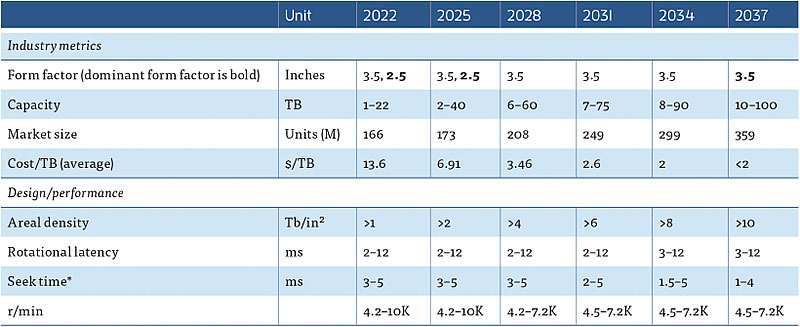According to the American Engineering Association IEEE, by 2028, the volume of hard disk drives (HDDs) will double to 60 TB, and their sales will increase to 359 million units by 2037, despite the growing popularity of SSDs. This will be affected by the introduction of technologies such as HAMR, as well as an increase in the recording density on the plates.

Image source: Seagate

Image source: IEEE
To achieve such indicators, manufacturers will have to significantly increase the recording density on the plates. So, to create a hard drive with a capacity of 40 TB, a recording density of 2 TB/in2 will be required, and for 60 TB – more than 4 TB/in2. By 2037, this figure should increase to 10 TB/in2. Such extreme values will require the use of new media, magnetic films and the development of fundamentally new read/write heads.
«To ensure the functionality of HDD read and write heads at high recording densities and high speeds, major changes in magnetic and non-magnetic materials are required, says the IEEE document. “These changes include improvements to storage media and protective coatings, as well as the development of heads capable of supporting recording densities in excess of 1 TB/in2. Changes in carrier substrate technology and the use of sub-1nm dielectric films for advanced giant magnetoresistive (GMR) and tunnel magnetoresistive (TMR) heads will also be required.”
Despite the fact that the HDD spindle speed will remain at 7200 rpm (RPM), an increase in recording density will have a positive effect on the sequential read/write speed. At the same time, HDD input/output operations per terabyte (IOPS) performance for single-drive models will likely decrease. However, IEEE expects hard drive sales to grow from 166 million units in 2022 to 208 million in 2028 and 359 million in 2037. This is due to the growing need for affordable and capacious data storage, for which HDDs are the ideal solution.